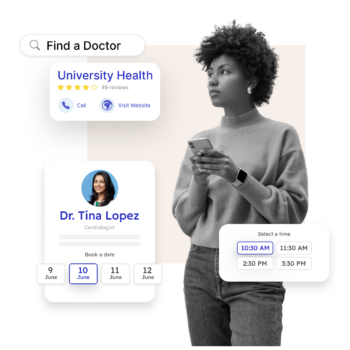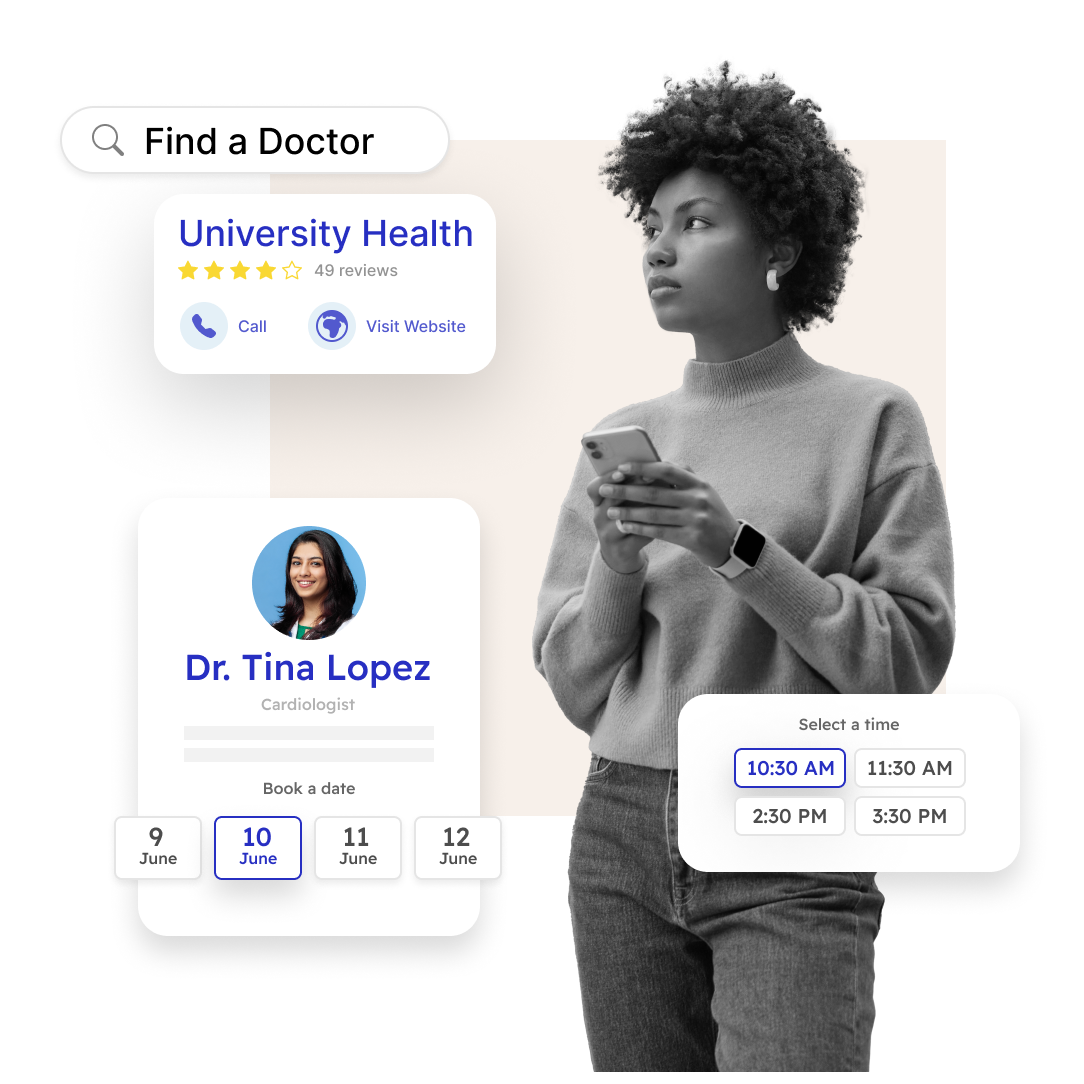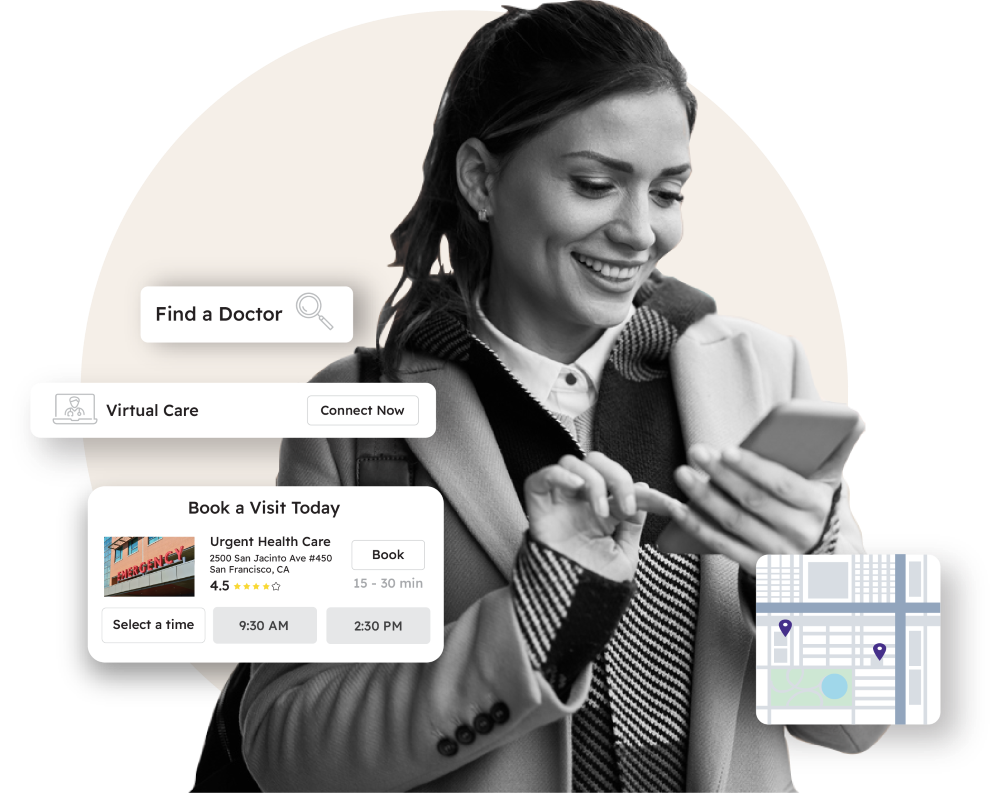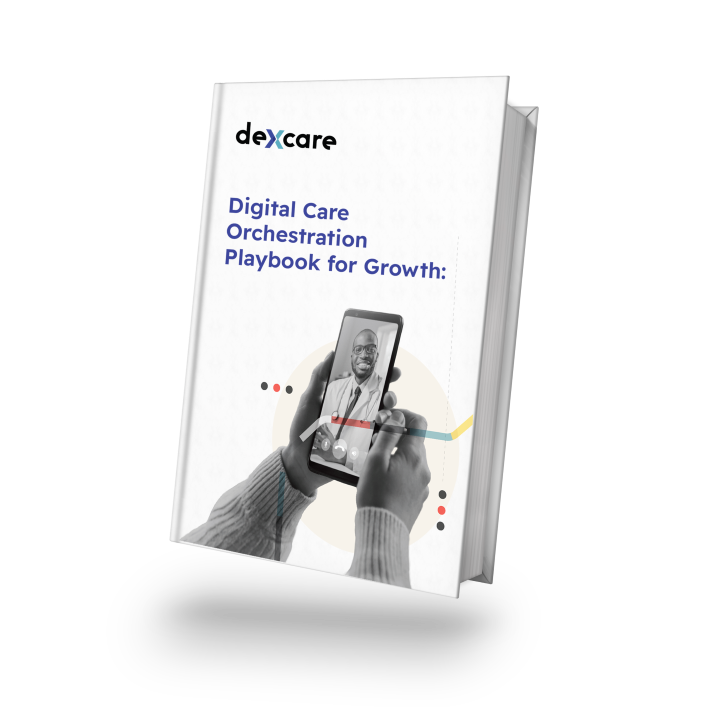Just as Americans are shopping online for the holidays, patients should be able to have the same convenience in finding the care that they need.
Consumers today are experts in online shopping. Whether you’re buying clothes, electronics, furniture, or nearly anything else, online stores allow you to sort items and apply filters to find the exact products you’re looking for, delivered exactly when you need them. The site may even recommend items it thinks you’ll like based on purchase history or other criteria. Once you find what you want, you can add it to your cart and check out with just a few clicks.
If online shopping can be this streamlined and simple, yet personalized to individual preferences, why can’t finding care be? By improving e-commerce capabilities in healthcare, it can.
Why healthcare needs e-commerce
The last time you tried to schedule a doctor’s appointment, what was your experience like?
Most likely, it wasn’t as simple as the last time you tried to buy a new shirt online.
Maybe you had to visit multiple different sites before you found the correct one for scheduling, or you were directed to call the office and were inevitably placed on a long hold. You may have even found a provider you wanted to see, only to find out they didn’t have any appointments available.
This is the current state of appointment scheduling, and it’s incredibly frustrating. To simplify this process and optimize care access, health systems need to merchandise care – making care options, providers, and appointment times more easily discoverable, just like your favorite online retailer.
Merchandising is the next frontier of healthcare, and health systems need to reach it in order to compete with growing threats in the industry.
Envisioning e-commerce in healthcare
Utilizing the same technology as online retailers, care discovery will be as easy as browsing your favorite store, and appointment scheduling will look like a digital storefront.
The patient can begin their journey by making a search on either a search engine or a website, including the health system’s digital front door. If searching on Google, for example, the e-commerce technology will route patients and drive traffic to the health system’s booking site.
The platform then automatically filters search results based on the patient’s input of intent and need and displays real-time availability for the care options best suited to their needs. The interface also shows additional information such as the providers’ specialties – just like you’d be able to see the details of a product you’re considering buying. Providers that aren’t a good fit or are unavailable aren’t shown at all, so patients don’t waste their time pursuing options that aren’t relevant.
With all this information personalized for the individual, patients can feel confident that they’re finding the best possible care option for them. Once the patient has identified the best provider, location, and time, they can book the appointment in just a few clicks. The whole process is so intuitive that, ideally, the care finds the patient instead of the patient having to find the care.
Internal research found that 80% of patients who begin the process of booking an appointment drop off before they complete it – missing out on critical and potentially life-saving care. By simplifying the process, health systems can greatly reduce this alarming number and ensure that all patients get the care they need.
Why health system executives should embrace e-commerce
Merchandising healthcare may seem controversial. You might worry that taking an e-commerce approach will make the experience more impersonal and transactional, but this is not the case.
Merchandising can make care more accessible and custom-tailored by allowing patients to find exactly what they want and need. Healthcare is undergoing a massive transformation, and patients now expect to find and receive care with ease and convenience. Merchandising is the best path to delivering these experiences that will result in the highest patient satisfaction.
Health systems will also see immense benefit from merchandising. Turning care discovery into a storefront will enable systems to better capture, convert, and retain patients, which will drive greater revenue down the road. One health system that implemented improved e-commerce saw a 121% conversion lift, 39% increase in bookings, and 30% more net new patients while also significantly lowering the cost of delivering care.
Our current appointment scheduling platforms aren’t enough anymore. It’s time for health systems to get on board with the model of e-commerce that online retailers have seen so much success with.
Merchandising is nothing to be afraid of – it’s just about getting things to consumers more intelligently and effectively – and both health systems and patients stand to benefit from this.
Derek Streat is founder, CEO and chairman of DexCare, a data-driven intelligence company focused on healthcare access.






